India is a vast country, impossibly rich in history, natural beauty, ecology, and culture. However, in the summertime, it can also be extremely hot — so hot that if you’re visiting outside of the dry season from December through March, you may want to seek out places to help you stay cool.
Keep in mind that March through the end of May is generally classified as the region’s summer when it’s hottest and driest. Meanwhile, June through October is monsoon season, when areas of western and central India receive powerful rains. These can sometimes make transit difficult, especially in hilly and mountainous areas, so always exercise caution when in these regions during monsoon season, as landslides sometimes do occur.
In short, you should probably visit India between November and March. If you do happen to be heading over during the hotter months, you’re definitely not out of options, and you might even find yourself having a completely unique experience you otherwise would never have had. A heat-conscious summer visit to India will most likely take you to the cooler climates that can be found in the mountains, where you’ll find everything from gorgeous Buddhist monasteries to the remnants of hill stations from the time of Britain’s occupation of India, which ran from 1858 to 1947.
Leh
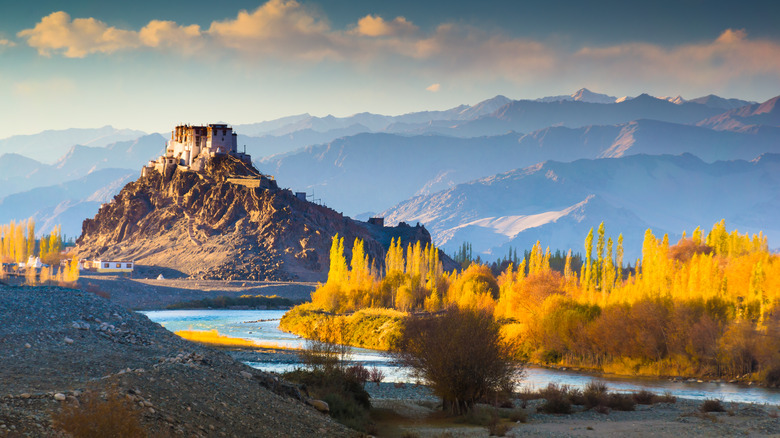
Ladakh rests at the northernmost tip of India, brushing against Pakistan to the west and Tibet to the east. With the Himalayas to the south and the Karakoram Mountains to the north, this majestic and historic locale can feel like an entirely different universe.
Leh is the capital of Ladakh, and you’ll most likely want to start all of your journeys through this region there. The best time to visit Ladakh is between April and October, when temperatures generally rest between 60 and 90 degrees Fahrenheit. There are plenty of stunning things to see in Leh, including monasteries, palaces, and adventures through mystical mountain ranges. At the top of your list should be the Khar, a complex that contains Leh Palace, Tsemo Castle, and the Buddhist monastery Namgyal Gompa.
You can also take in panoramic views of the city at the Buddhist temple Shanti Stupa, which rests on a towering hilltop and exudes a sense of peace. For a little mysticism, check out the Magnetic Hills nearby Leh — if you park your car at the base of a road that appears to slant upwards, it will reportedly begin moving towards the hills on its own in an as-yet-unexplained display of wonder.
Darjeeling
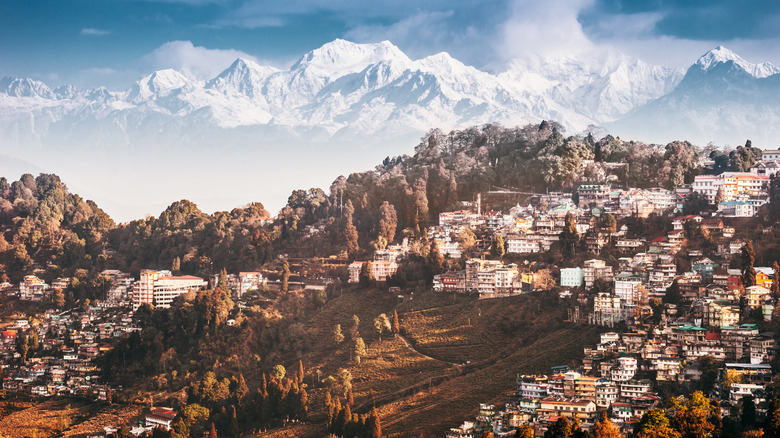
If the name Darjeeling brings to mind fragrant teas, there’s a geographical reason for that. The city is notorious for the black tea grown on its hilly plantations, which forms the basis of its economy to this day. Located in West Bengal in the far north of India, Darjeeling rests among the Himalayas and offers cool summer temperatures, which made it a favorite summer retreat for the British during England’s colonial occupation of India.
Adventurers can trek through the mountains or mountain bike across the hills, while anyone can enjoy the collection of bazaars at the base of the town or watch the sunset while gazing at Khangchendzonga, the world’s third-highest mountain. If you need a rest, take a ride on the Darjeeling Himalayan Railway, also known as the Toy Train, which snakes its way through thrilling twists and turns as it makes its way through the hills, even making a 360-degree turn at one point. Of course, there are also plenty of places to enjoy fragrant cups of tea.
Manali
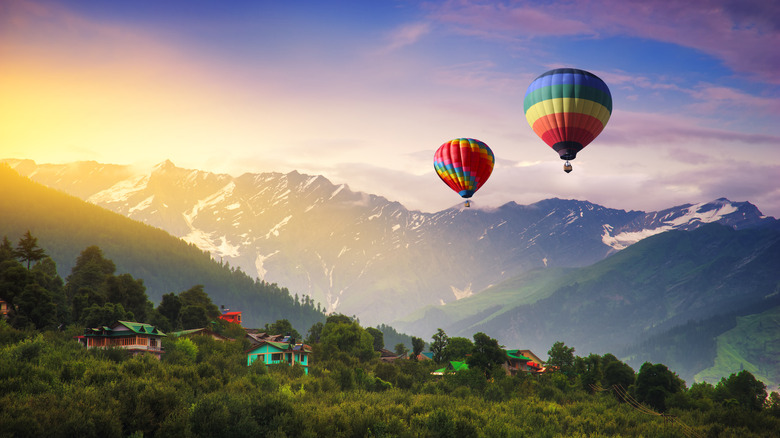
structuresxx/Shutterstock
Adventure lovers and romantics alike might find themselves drawn to Manali, a town in the Himachal Pradesh region located in the Himalayas just beneath Ladakh in the north. Manali has a dramatic creation story — according to Hindu mythology, the sage Manu survived a flood that destroyed the rest of the world and then recreated humankind, and legend has it that the place where civilization began anew was the town of Manali. Today, its landscape reflects the drama of that narrative.
Here, you can visit temples such as the famous pilgrimage site Hidimba Devi Temple, which honors Hidimba, the demonic wife of the warrior Bhima of the Mahabharata, and pay tribute to their warrior son Gatothkach at the sacred tree that grows behind it. You can also go paragliding in the Solang Valley, take dips in hot springs at Vashisht Baths, and visit other sacred pilgrimage sites like Manikaran Gurudwara, where the hot springs are said to have healing properties. Nature lovers can also enjoy extensive snowboarding, trekking, and white-water rafting, as well as plenty of food, resorts, and energy in the tourist-centered town. It gets quite cold here in November and beyond, so the best time to visit is between April and July.
Spiti Valley
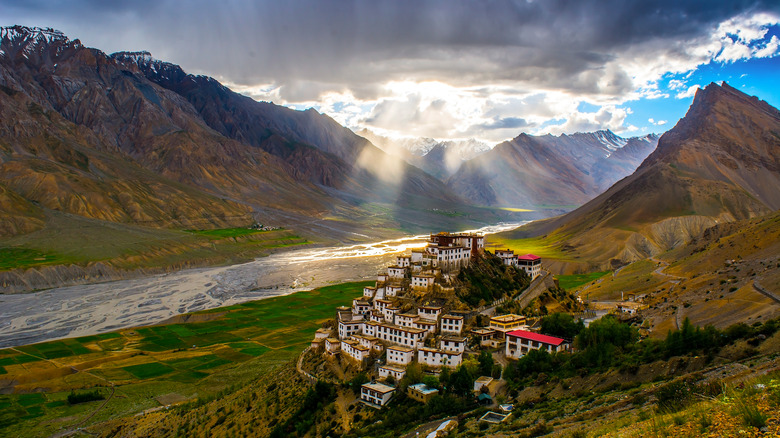
Sandiz/Shutterstock
Also located in Himachal Pradesh, Spiti Valley is a desert-like mountain region studded with ancient monasteries, clear lakes, and villages that seem to scrape the edge of the sky. The influence of nearby Tibet is palpable here, and you’ll find plenty of monasteries, such as the labyrinthine hilltop Ki Monastery and the ancient Tabo Monastery, where you can drink in the area’s ethereality while observing statues of bodhisattvas glittering in caves, listen to chanting weave through the mountain peaks, and drink in the atmosphere of remote reverence that pervades this part of the world.
Spiti is also home to pristine alpine rivers and endless stunning mountain ranges punctuated by villages and inhabitants who have adapted to the harsh climate. Whether hiking through the mountains or trekking or cycling past majestic bodies of water like Chandra Taal, also known as the “Moon Lake,” you’re sure to find something transcendent here. Be sure to dress warm any time of year here, though, because temperatures can plummet when you’re up this close to the clouds.
Munnar
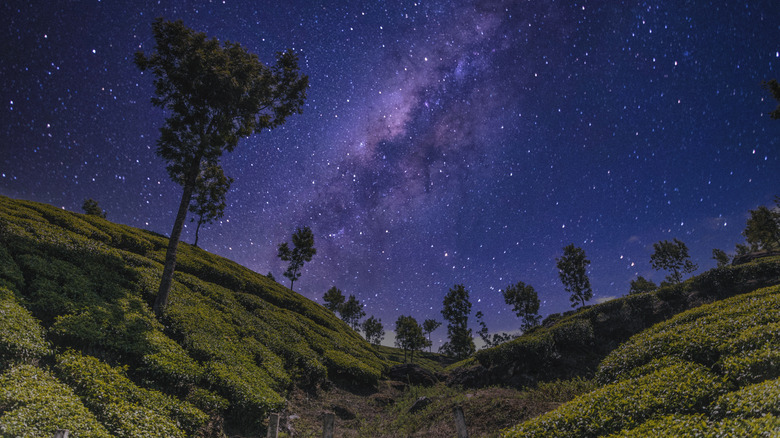
Instants/Getty Images
Located among the slopes and crags of the Western Ghats in the southern region of Kerala, Munnar’s name means “three rivers” in Malayalam. Indeed, this former British hill station is located at the cross-section between three rivers: the Muthirapuzha, Nallathanni, and Kundala. Munnar is one of India’s most beloved tourist destinations, offering romantic vistas for honeymooners, trekkers, and everyone in between.
Here, you can enjoy sprawling tea plantations, spice shops, national parks, bird sanctuaries, and endless valleys of wildflowers, including the rare Neelakurinji flowers, which bloom only once every 12 years. Meanwhile, misty emerald-green hills and valleys will make you feel like you’re walking around in a sea of clouds. Munnar’s busy town center is a fabulous place to start your journey, but you may want to consider lodging outside the town if you’re looking to get more up close and personal with the landscape. While April and May are great times to visit here to escape the summer heat, be sure to exercise caution with this region during monsoon season, particularly if you plan on trekking, as these hills can get slippery.
Dharamshala
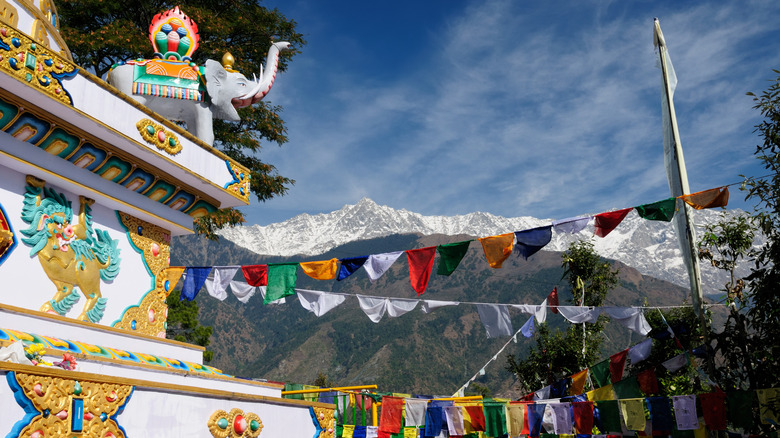
Rchphoto/Getty Images
Located in Himachal Pradesh, Dharamshala has been the adoptive home of the 14th Dalai Lama and the Tibetan government since its exile in 1959. It’s divided into two halves — Lower Dharamshala, which is full of markets and towns, and Upper Dharamshala, which consists of cedar forests that hold the heart of the area’s Tibetan settlements. Many tourists visit this mountain hill station to see the Dalai Lama and experience Tibetan culture, and for that, you’ll want to start with the Tsuglagkhang Complex, where the Dalai Lama lives when in residence. If you’re hoping to catch him, be sure to check the schedule on the official website and plan your trip in advance.
Below that, the hills overflow with religious sites, from the Gyuto monastery— home to Buddhist tantric practices — to the Aghanjar Mahadev temple, dedicated to Shiva. There’s also the ashram Chinmaya Tapovan, the neo-Gothic St. John in the Wilderness Church, and much, much more. Spiritual seekers won’t find themselves lacking in ways to attempt to commune with the divine.
Outside of Dharamshala’s religious sites, there are also plentiful opportunities to explore crystalline lakes, stunning waterfalls, and many more natural wonders. It’s important to note that this place gets a bit damp during the monsoon season in July and August and extremely chilly in the winter, making March to July and September to November the best times to visit.
Mukteshwar
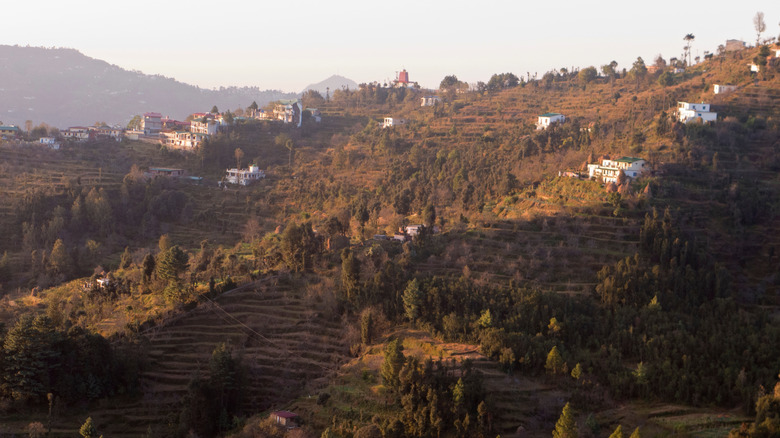
Edda Dupree/Shutterstock
Mukteshwar is a popular tourist destination in the adventure-loving northern region of Uttarakhand, which sits next to the northwest edge of Nepal and has been dubbed the “Land of the Gods.” This awe-inspiring destination is a hill station that offers cool temperatures all summer long.
Some of this town’s main attractions include the Mukteshwar Temple, which is dedicated to Shiva and sits atop the area’s highest hill. There are plenty of other religious sites to see, including a Jain temple and a Methodist church. Most of the temples also offer stunning views of the Himalayas.
Mukteshwar is also well-known for its glorious mountains and forests, and particularly for its incredible waterfalls, including the 60-foot-high Bhalu Gaad Waterfall, which is also known as the “rainbow waterfall” due to the many rainbows that can be seen glancing off its thundering waters and the crystalline lake below. Intrepid travelers can enjoy zip-lining, rock climbing, trekking, and more while the area offers plenty of resorts and hotels.
Nainital
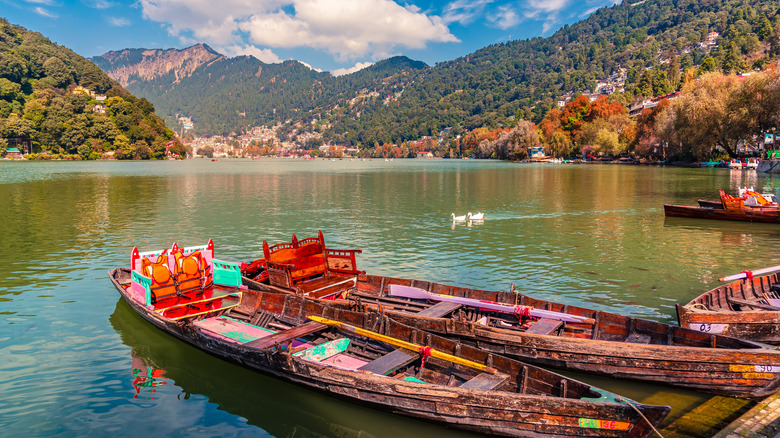
Amit kg/Shutterstock
Another hill station in Uttarakhand, Nainital is best known for its vast eponymous lake, which is said to be one of the eyes of Shiva’s wife, Sati, in Hindu mythology. According to one version of the story, Shiva was carrying his wife’s corpse across the sky when one of her eyes plummeted down to the Earth, and today, the lake still carries deep significance.
Today, you can take a boat ride across its serene surface, enjoy incredible views from up in the clouds with a cable car ride, get up-close-and-personal with tigers and other wildlife at Corbett National Park, or just enjoy time by the water. Nainital is speckled with lakes, and it is also a perfect place to take a hike or horseback ride through the majestic Himalayas. Labyrinthine cave gardens, temples, peaks, and colonial relics also abound. The best time to visit here is between March and June, though Nainital is quite popular during this time, so be sure to book your stays in advance.
Coorg
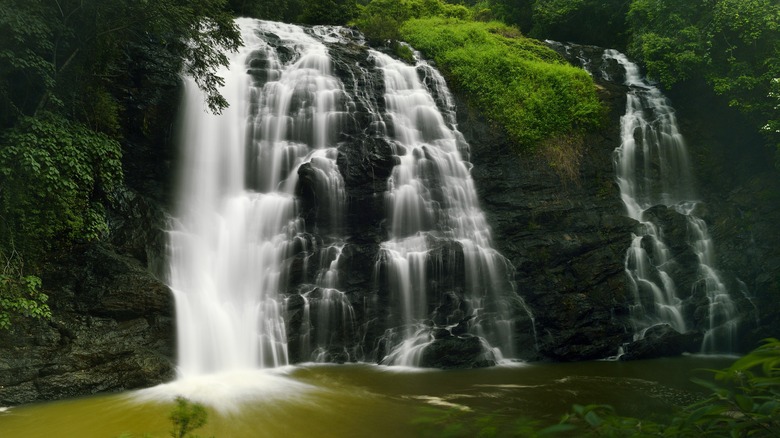
Arvind Balaraman/Shutterstock
Sometimes labeled “The Scotland of India” or “The Wales of India” due to its misty, hilly, green appearance, Coorg — officially known as Kodagu — is a patchwork of small towns and forests offering both luxury and adventure. Here, you can white-water raft down the Barapole River or drink in the ethereal ambiance of Abbey Falls, a waterfall nestled between coffee and spice plantations. It’s located in southern India among the Western Ghats, and its hills stretch up to 5,000 feet. The landscape here is lush, and you’ll find everything from cardamon and sandalwood plantations to orange groves and evergreen forests in these hills. It’s also home to three wildlife sanctuaries and a national park.
Coorg wasn’t always part of India. It was ruled by a Hindu dynasty until it was overtaken by the British in 1834 and became a part of the state of Mysore, now called Karnataka, in 1953. Though not as frosty as some of the more remote locations on this list, this hill station’s waterfalls and greenery offer a temperate escape from the worst of the heat in the summertime, especially compared to the sometimes brutal temperatures of its surrounding areas.
Udaipur
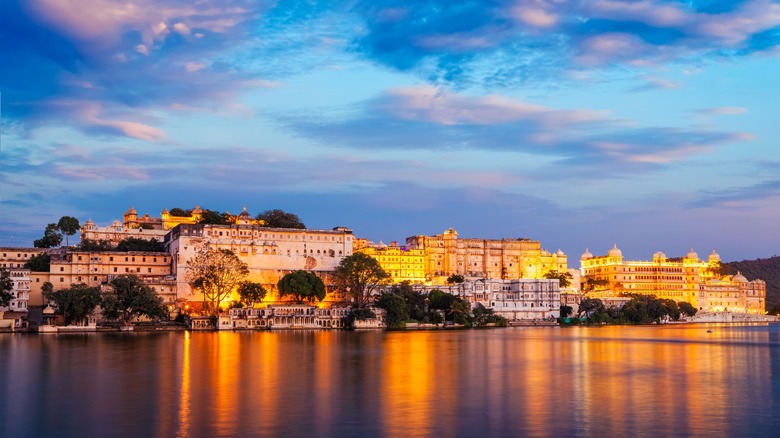
WanderingAkshat/Shutterstock
Located in Rajasthan in the northwest of India, magnificently romantic Udaipur is a mix of luxury, history, and natural wonders. This city is nestled on the glittering banks of Lake Pichola, and the peaks of the Aravalli Range sprawl around it in all directions. Udaipur itself is packed with temples, palaces, bazaars, and winding streets that are easy to get lost in.
Be sure to visit the majestic City Palace, which features a well-maintained museum, a crystal gallery, and much more, as well as the refined Monsoon Palace, which rests atop a hill with delightful views of Fateh Sagar Lake. There are also plenty of opportunities to take in some culture at locations ranging from the dreamlike lakeside Bagore Ki Haveli Museum — where you can watch folk dances in the evenings — to the ornately spiritual Jagdish Temple, which is dedicated to Lord Vishnu.
You may want to avoid visiting Rajasthan during the summer when temperatures can peak, but monsoon season can be a surprisingly excellent time to visit this region. The occasional drizzle and clouds can sometimes offer a respite from hot days.
Tawang
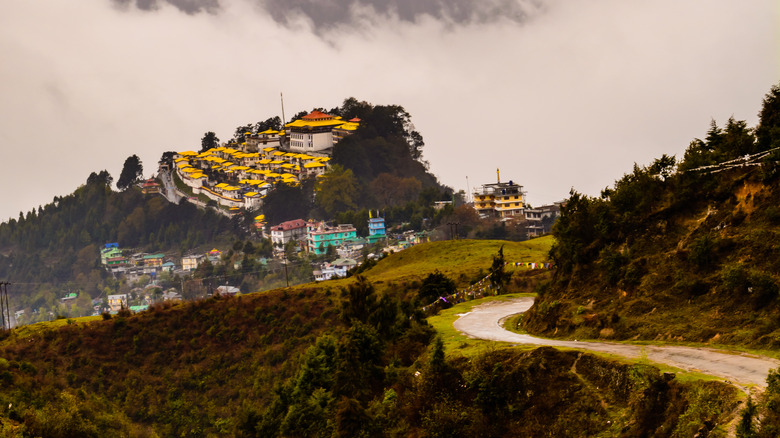
Ghosh_amit/Getty Images
Located in the soaring Himalayas, Tawang is an off-the-beaten-path destination that offers alpine temperatures in the winter, pleasant ones in the summertime, and a complete respite from everything touristy. Sitting at 10,000 feet above sea level, its landscape includes everything from jungles to frigid mountain peaks. In between, you’ll find stunning Buddhist monasteries, such as the famous Tawang Monastery, which is one of the largest and oldest temples in Asia, or Taktsang Gompa, which perches majestically on the side of a cliff.
You’ll also find winding mountain roads, waterfalls, glacial rivers, lakes reflecting the sky, and historic sites commemorating the Sino-Indian War, which was fought in this territory in 1962. Sela Pass is one of the area’s most popular tourist destinations, with its collection of lakes and breathtaking views. However, don’t plan on staying here too long, as it can cause altitude sickness. Like North Sikkim, Tawang requires special permits for visitors, so plan trips well in advance.
Meghalaya
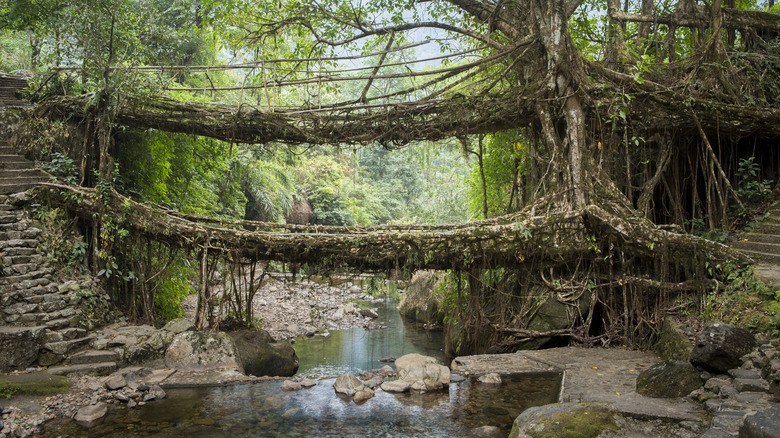
Visualcommunications/Getty Images
Situated on the far eastern side of India, Meghalaya is a state that allows visitors to exchange the summertime heat for moderate temperatures and treks through green valleys, rolling cliffs, and peaceful waterfalls. Lush oak, pine, and bamboo forests abound, and animals ranging from elephants to tigers and leopards can all be found stalking this earthly paradise.
The area also is rich in folklore, history, and wonder, and many indigenous tribes call it home. Be sure to visit the iconic Nongriat Root Bridges — bridges made of the roots of living trees, crafted by indigenous Khasi villagers — and take in the breathtaking length of Nohkalikai Falls, the highest plunge waterfall in India. Meghalaya also has a massive underground cave system, which holds everything from ancient monoliths to even older fossils. Meanwhile, the capital city, Shillong, offers more of a cultural experience, boasting an arts scene, cafes, and much more. As with all these cities, be sure to check the calendar because Meghalaya comes alive in celebration of several fabulous festivals throughout the year.
Summers here can be extremely cool, with temperatures only hitting around 70 degrees Fahrenheit in August. However, watch out for the monsoon season, as the area can experience heavy rains between May and September. The towns of Cherrapunjee and Mawsynram have been awarded the title of some of the wettest places on Earth — which only adds to the region’s magnificent biodiversity and greenery.
North Sikkim
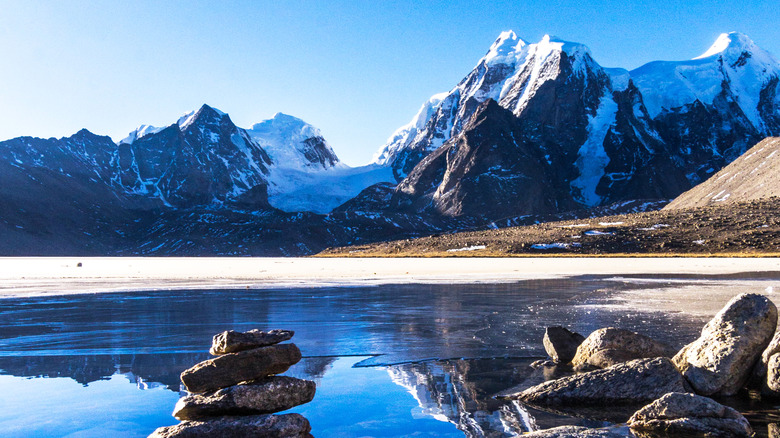
Nitish Waila/Getty Images
Many travelers on Reddit have described North Sikkim as one of the most beautiful places they’ve been, and just a glance at photos of this place will explain why. Lovers of wildflowers, majestic bodies of water, and untouched natural beauty will find paradise in North Sikkim, which borders Bhutan, Nepal, and Tibet. This Himalayan wonderland offers snow-capped mountains and mirrored alpine lakes, such as the dizzyingly high-up Gurudongmar Lake, which rests almost 18,000 feet in the mountains and is a sacred site for Buddhists.
You can also visit peaceful villages such as Lachen or the temple-studded Chopta Valley, which is a typical starting point for visits to this region. You might also pay a visit to the fragrant acres of the Shingba Rhododendron Sanctuary, which is in its full glory between April and July, or the village of Okhrey, also a perfect place for checking out rhododendrons and getting away from it all.
Do your research before going here, though, as it can get chilly any time of year and landslides during monsoon season can sometimes be devastating. Tourists also need special permits to visit this place, which can be obtained from Sikkim tourism offices in several cities including New Delhi and Darjeeling.
Ooty
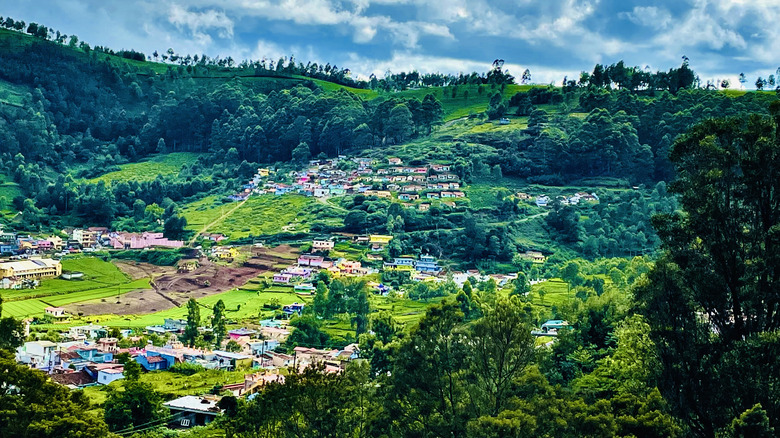
S Abishek Kumar/Getty Images
Offering scenic railway rides and rich history and biodiversity, Ooty is a hill station in the southern Indian state of Tamil Nadu that is sometimes referred to as the “Queen of the Hill Stations.” It’s so scenic that it’s frequently used as a filming location for Bollywood directors, and with its waterfalls, grasslands, and gleaming bodies of water, it’s easy to see why. Here, you might take a cool dip in Pykara Lake, Avalanche Lake, or one of the many other lakes, or consider paying a visit to the Ooty Botanical Gardens and the Rose Garden for an enjoyable day among flora and fauna of all stripes.
For a break from the sun, you can ride the Nilgiri Mountain Railway (a UNESCO World Heritage Site) or learn about the area’s indigenous tribes in the Tribal Research Centre Museum. Ooty is also a great place to visit any time of year, with pleasant temperatures during the hot and monsoon seasons and a crisp, wintry chill in the colder months.

